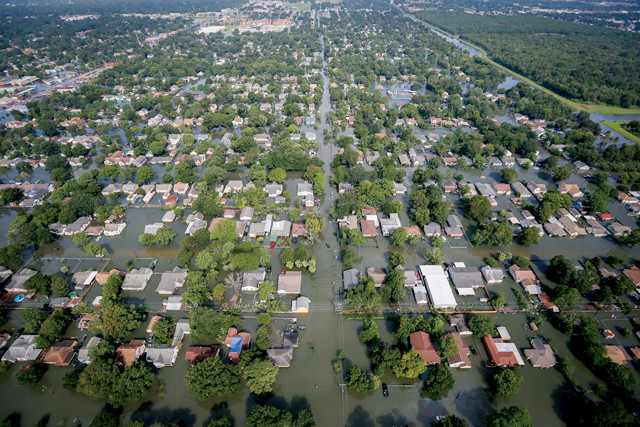
by Mary Caperton Morton Wednesday, November 15, 2017

Flooding in urban areas is on the rise, new research finds. Here, floodwaters surround homes in southeastern Texas in late August after Hurricane Harvey. Credit: Air National Guard photo by Staff Sgt. Daniel J. Martinez/Released.
In a comprehensive global analysis, including data from more than 43,000 rainfall stations and 5,300 river monitoring stations in 160 countries, researchers report that global rainfall is increasing, likely due to warming air temperatures that allow more moisture into the atmosphere, causing more intense rainfall. Rural areas tend to absorb excess water during storms, preventing widespread flooding in rural zones, but between storms, rising temperatures also mean more evaporation from exposed soils, creating drier conditions over the long term, the team noted in Scientific Reports. Meanwhile, in urban environments, more intense rainfall often overwhelms stormwater catchments in places with less exposed soil, leading to a higher incidence of flooding.
In 2013, global flood damages topped $50 billion, and the annual costs are expected to double in the next 20 years as storms intensify and more people move into more urban areas. “It’s a double whammy,” said lead author Conrad Wasko of the University of New South Wales Water Research Center in Australia, in a statement. “People are increasingly migrating to cities, where flooding is getting worse. At the same time, we need adequate flows in rural areas to sustain the agriculture to supply these burgeoning urban populations.
© 2008-2021. All rights reserved. Any copying, redistribution or retransmission of any of the contents of this service without the expressed written permission of the American Geosciences Institute is expressly prohibited. Click here for all copyright requests.